Charcoal
木炭
Mokutan
Charcoal is a drawing instrument made by carbonizing branches and offcuts from tree trunks. Due to its softness, it can create various effects such as delicate tones, shades and gradations, enabling a wide array of expressions despite being a monochrome drawing tool.
The raw materials for charcoal include willow and mulberry branches, offcuts from chestnut, birch and hazel tree trunks, and vine stems. These are thoroughly dried, sealed in a container and fired in a kiln at a temperature of 600 degrees Celsius or higher to produce high-grade charcoal. The hardness and the darkness of color of the charcoal depend greatly on the type of tree the wood came from and the firing conditions. Even wood from the same type of tree can have slightly different qualities depending on the age of the tree and its growing environment. Unlike pencils, charcoal is not glossy or hard. Therefore, lines drawn have a granular effect from the friction created when drawing. Because charcoal does not contain any ingredients to fix the color to the support surface, the colors come off very easily. This, however, enables the artist to make fine adjustments to the degree of coloring with a cloth or finger, to add subtlety and depth to the work. Using a special support medium known as charcoal paper will enhance color fixation due to the distinct softness and texture (corrugated grooves) of this paper, making it possible to achieve a variety of expressions.
When using charcoal, it is important to make sure you do not damage the paper while drawing. Four or five sheets of carbon paper should be laid beneath the paper you are working on to cushion the pressure of the charcoal. When coloring over parts that have already been colored, greater density can be achieved by wiping the charcoal with a wet cloth first or pressing down on the charcoal with your knuckle as if to rub the color into the grooves of the paper. Use bread or a soft cloth when erasing, as rubbing too hard with a kneaded eraser or the finger could flatten the corrugations on the paper surface.
Charcoal is one of the oldest writing instruments. It is believed to have been the most readily available tool when humanity first came up with the notion of drawing shapes and symbols. Works that can be categorized in the same group as present-day charcoal drawings appeared with the development of Western papermaking techniques around the middle of the 14th century, and works by artists such as Michelangelo and Leonardo da Vinci are still in existence today.
Charcoal made from willow and mulberry branches has a core which should be removed before use as it does not fix well to the surface and produces different color shades to the rest of the charcoal. A fixative is recommended after the charcoal drawing is complete because the colors are easily removed otherwise. Charcoal can be purchased at general art stores.

 The standard grip
The standard grip- Examples of charcoal strokes (on MBM Charcoal Paper [heavyweight])
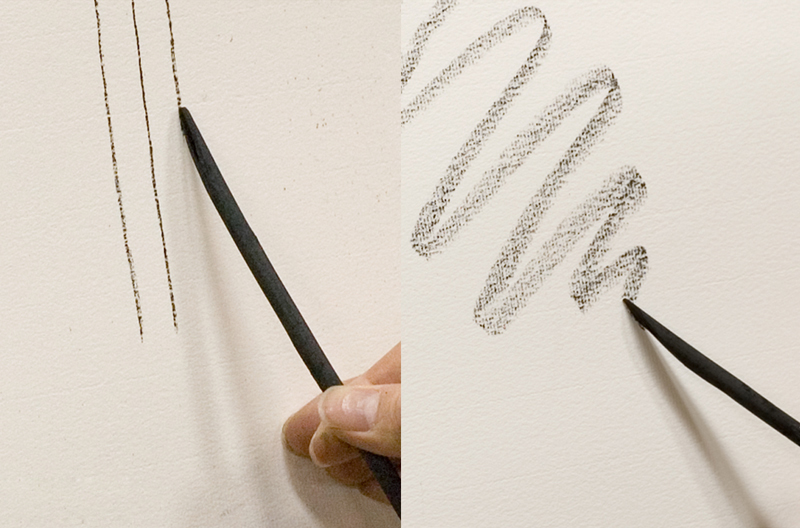 Drawing lines
Drawing lines 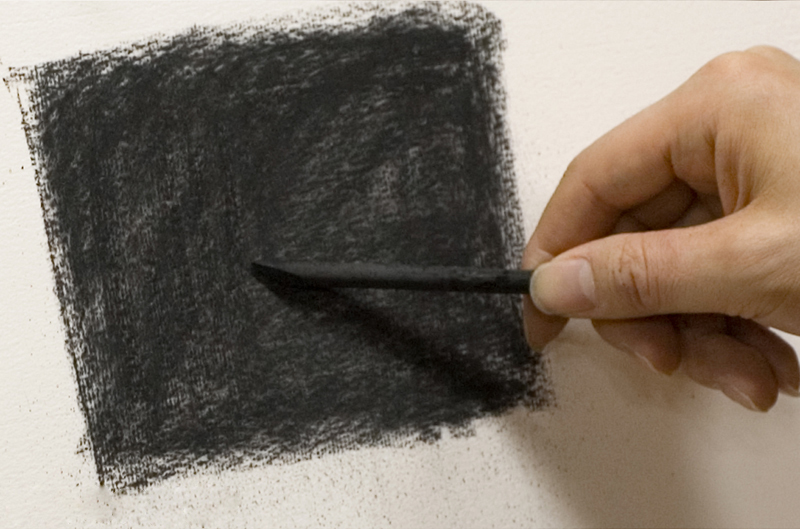 Filling with the charcoal laid against the paper
Filling with the charcoal laid against the paper Pushing against the charcoal with a finger
Pushing against the charcoal with a finger Pushing against the charcoal with the palm of the hand
Pushing against the charcoal with the palm of the hand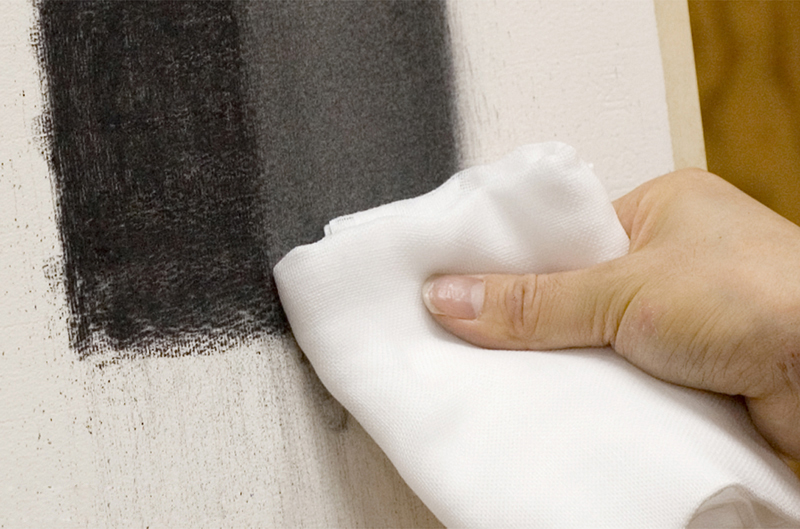 Pushing and dulling with a cloth
Pushing and dulling with a cloth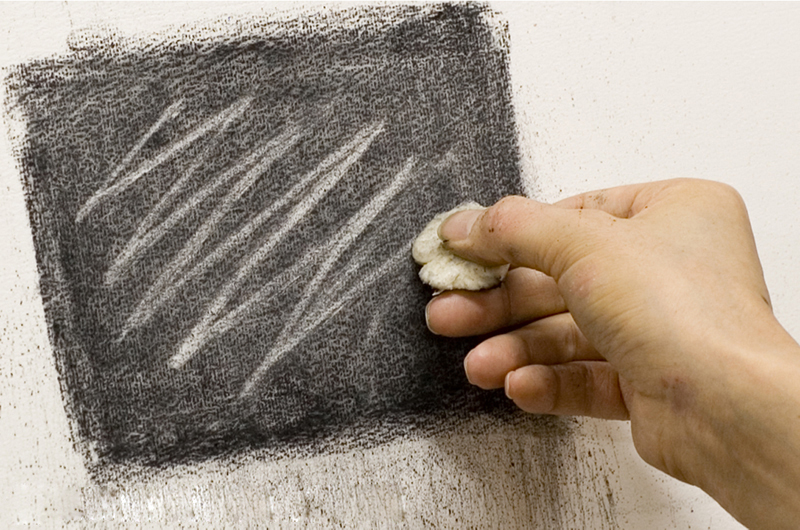 Drawing lines with hardened bread
Drawing lines with hardened bread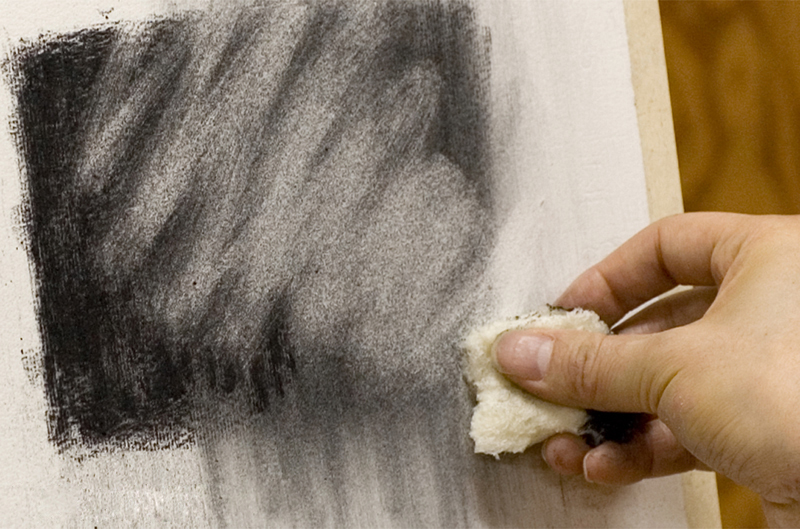 Making white areas with bread
Making white areas with bread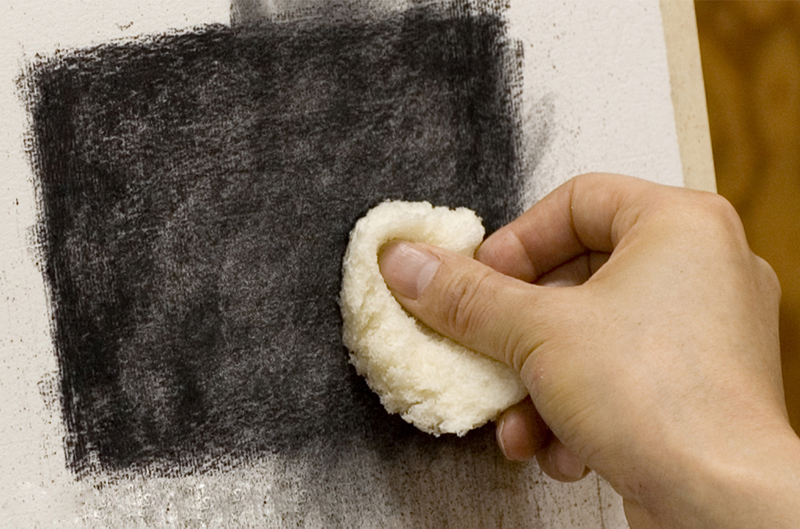 Pushing and dulling with bread
Pushing and dulling with bread- Shading and making subtle changes with charcoal (willow; on MBM Charcoal paper [heavyweight])
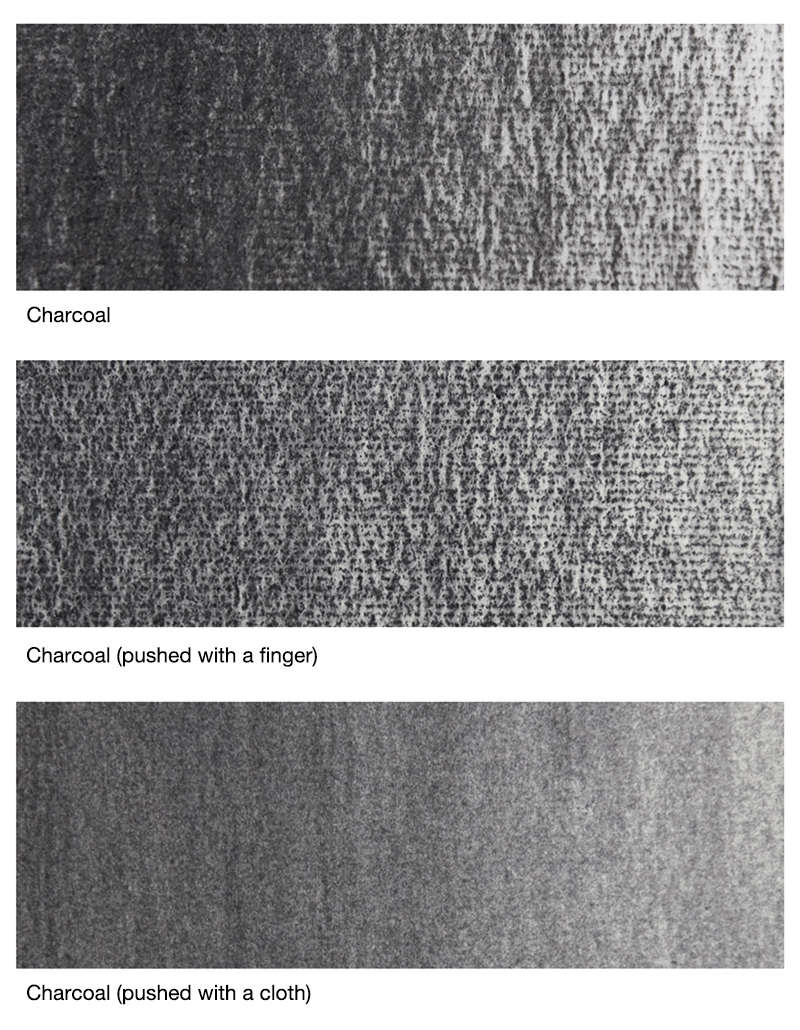
- Examples of strokes by type (on MBM Charcoal Paper [heavyweight])

